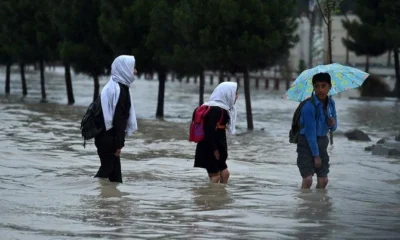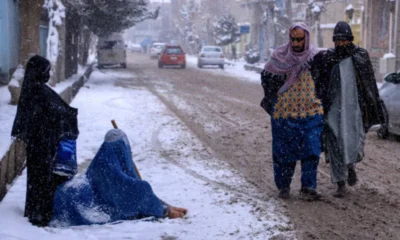Asia
Devastating earthquake kills dozen in Afghanistan and Pakistan
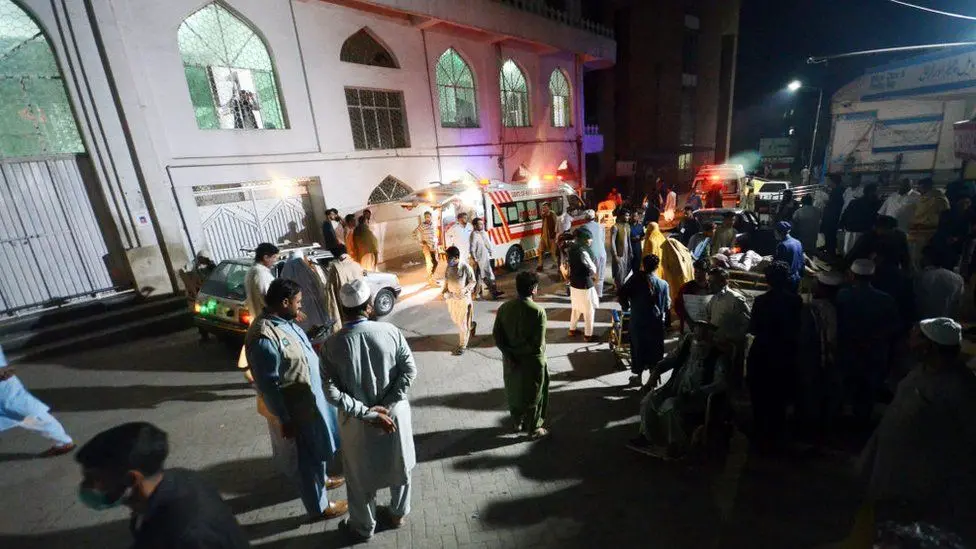
Dozens of people were killed and wounded in Afghanistan and Pakistan after a magnitude 6.5 earthquake struck some parts of the two neighboring states that also created fear among the citizens.
With the epicenter at northern Afghanistan, the earthquake also rocked India, and the tremors were felt in Turkmenistan, Kazakhstan, Tajikistan, Uzbekistan, China and Kyrgyzstan.
People in Afghanistan were in panic, and immediately took to the streets to avoid a second jolt if there was any. They were really afraid, and immediately reckoned the recent earthquake that killed hundreds of people.
“It was early evening when the earthquake happened and we rushed toward the exit door,” Zahir Akbari, an Afghan resident in the capital city Kabul said.
It was really terrifying as it kept shocking the city for a while. “We are living in an area where there are not many sky-rocketing buildings, otherwise there would be much prosperity, destruction and human casualties,” he said.
The US Geological Survey put the epicenter at the Hindu Kush Mountains in the sparsely populated northeastern Badakhshan province, 40km southeast of Jurm village at the considerable depth of 187km.
15 dead and 29 wounded in Afghanistan
Though the Taliban confirmed less earthquake-related casualties, local news agencies put the death toll at 15 people. Another 30 were wounded in the incident that mainly affected people in Panjshir, Baghlan, Takhar, Badakhshan, Laghman. Other provinces, including Kabul the capital city, were shocked that it had no human casualties and property damages.
Two people lost their lives in Takhar and 10 more, including children, received injuries. Additionally, at least 20 homes were completely destroyed.
At least four people, from one family member, lost their lives in Badakhshan province. Two among the casualties were children.
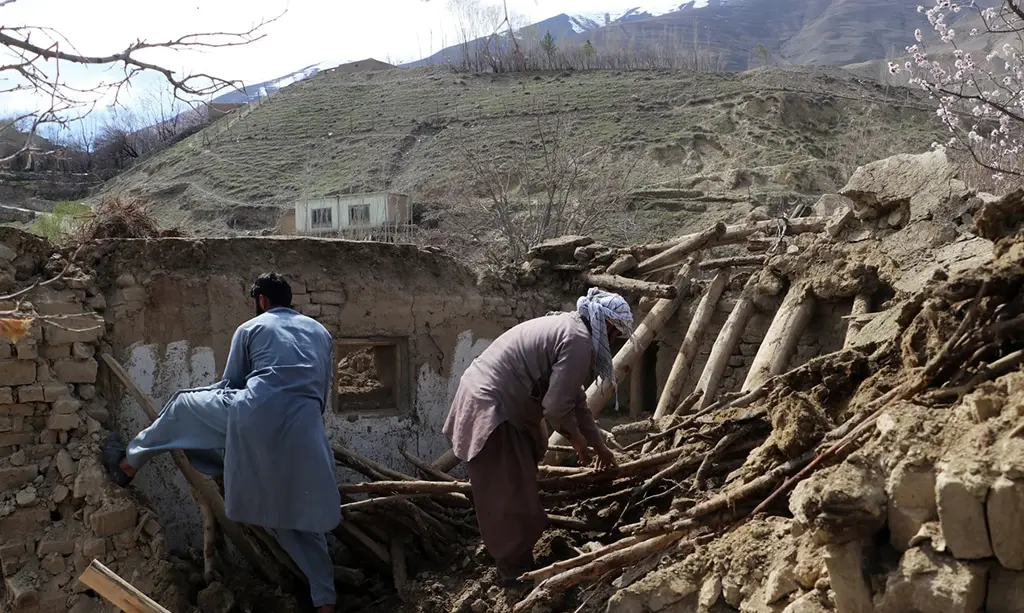
JURM, AFGHANISTAN: Residents clear debris from a damaged a house at Sooch village in Jurm district of Badakhshan Province on March 22, 2023, following an overnight earthquake. AFP
Human casualties and prosperity damages were also reported in Laghman and Panjsher. Over 15 homes were also destroyed in Laghman, while in Panjsher, three homes were destroyed.
Taliban spokesman for the ministry of national disaster management said that 65 homes were destroyed as a result of the earthquake. He also confirmed the death and injury of 50 people, but did not specify the numbers.
10 dead and 62 wounded in Pakistan
At least ten people died, including two children, and 62 were injured in Pakistan, according to the country’s Provincial Disaster Management Authority.
Another ten homes were completely destroyed and another 55 had been partially damaged. The USGS reported a magnitude of 6.5, but the Pakistan Meteorological Agency reported a magnitude of 6.8.
One of the worst earthquakes in Pakistan was in 2005 with 7.6 magnitudes that hit Khyber Pakhtunkhwa, shaking Islamabad and Azad Kashmir. At least 79,000 people were killed, and more than 32,000 buildings collapsed in Kashmir in that time. Further fatalities and destruction were also reported in Afghanistan and India, but Pakistan was hit harder.
The last one was in January this year, in which two earthquakes jolted Islamabad with a 5.6 magnitude while a 5.6 magnitude struck Khyber Pakhtunkhwa province.
Afghanistan’s worst earthquake
The region has been widely hit by the earthquakes in the past some months. The worst hit was in Turkey recently, in which tens of people were killed and hundreds more wounded and the same number saw their homes destroyed completely.
However, Afghanistan was also hit with a deadly earthquake last year with a magnitude of 6.1 that struck eastern Afghanistan, killing over 1,000 people and injuring several others.
In the last two decades, there were three deadly earthquakes that took the lives of hundreds of people and wounded hundreds more.
One of the deadliest was when it shocked Nahrin district of Baghlan province in which 1,800 residents were killed and over 4,000 others were wounded.
Asia
China hosts SCO defense ministers on warship amid regional tensions
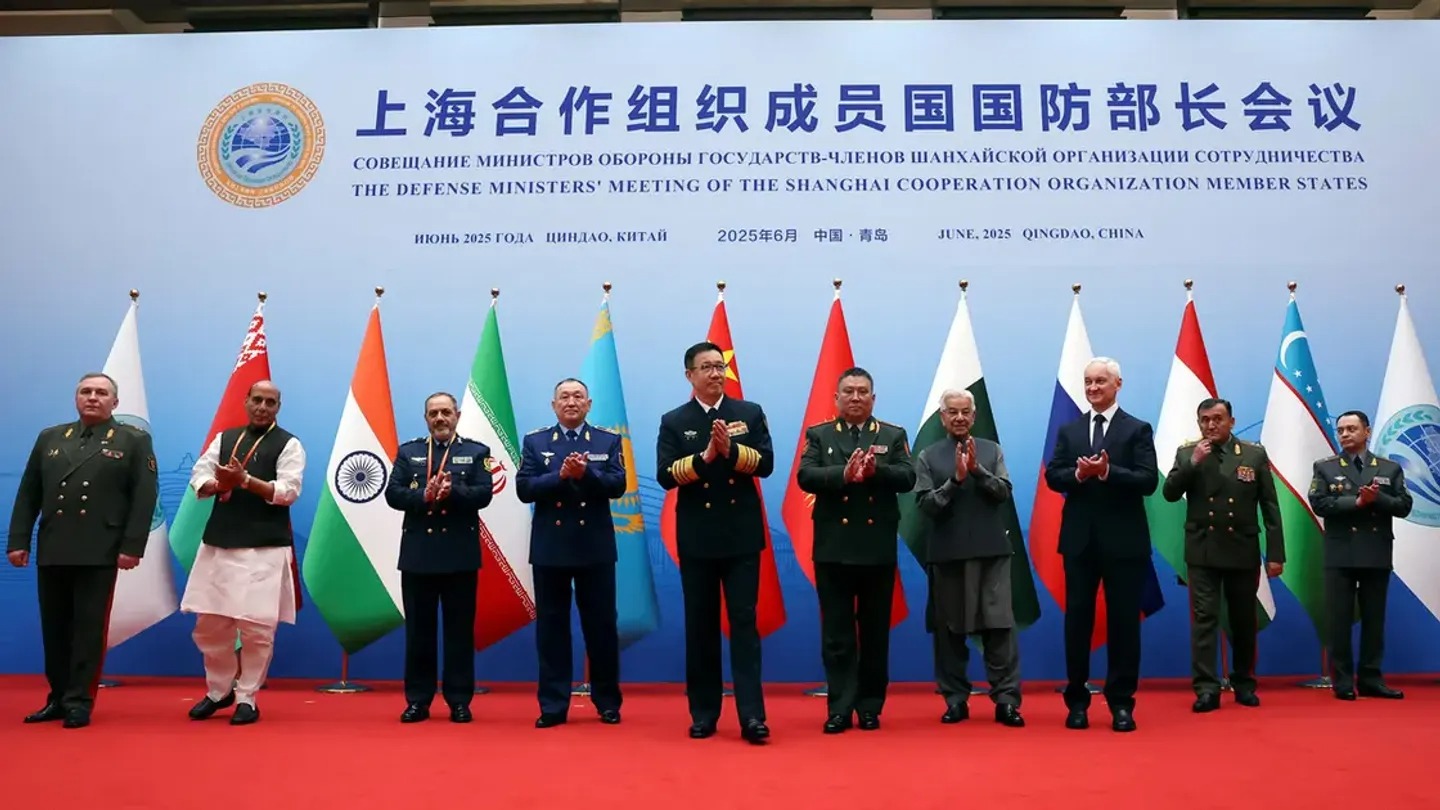
Chinese Defense Minister Dong Jun hosted his Iranian counterpart and other high-level defense officials from Shanghai Cooperation Organisation (SCO) member states aboard an advanced Chinese warship, just days after the US bombed Iran’s nuclear facilities.
Iranian Defense Minister Aziz Nasirzadeh was among the defense officials welcomed by Dong on a military vessel in the coastal city of Qingdao, China, as part of a two-day SCO defense ministers’ meeting that concluded on Thursday.
According to Chinese state television CCTV, Nasirzadeh and other defense officials toured the People’s Liberation Army (PLA) Navy’s Type 052D destroyer, the Kaifeng, and later attended a reception on the ship’s deck.

Aboard the ship, Nasirzadeh thanked Beijing for “supporting Iran’s legitimate position following the recent attacks” by Israel and the US.
“We hope that China will continue to stand on the side of justice, help maintain the current ceasefire, and play a greater role in de-escalating regional tensions,” Nasirzadeh said, according to Xinhua.
In his address to the assembled ministers, Dong reportedly stated that “unilateralism, protectionism, and hegemonic and bullying acts are on the rise, seriously disrupting the international order and becoming the greatest source of chaos and conflict.”
Dong called for closer cooperation within the United Nations, the SCO, and other multilateral frameworks, urging members to unite with “more like-minded forces” to defend international justice and maintain global stability.
“SCO countries must remain true to the organization’s founding ideals, uphold the ‘Shanghai Spirit,’ and deepen practical cooperation in all areas,” Dong said. “With stronger actions, we can jointly safeguard a peaceful environment for development,” he added.
The event followed the US attacks on three of Iran’s key nuclear facilities on Saturday, which Beijing strongly condemned.
The Chinese Foreign Ministry stated that the attacks on nuclear facilities under the supervision of the International Atomic Energy Agency seriously violated the UN Charter and its principles.
Additionally, the SCO meeting coincided with a NATO leaders’ summit in The Hague. In a statement from The Hague, US President Donald Trump announced that the US would hold talks with Iran about a possible nuclear deal “in the coming week.”
Bilateral Talks
According to Xinhua, the Chinese defense minister later held separate bilateral meetings with the defense ministers of Belarus, Pakistan, Kyrgyzstan, and Russia. The state news agency reported that all parties appreciated Beijing’s efforts and significant contributions to developing SCO operational mechanisms and deepening inter-sectoral cooperation during its rotating presidency. They also expressed a strong will to further consolidate and expand military ties.
Pakistani Defense Minister Khawaja Asif praised Beijing’s role in de-escalating tensions. “Pakistan highly values its robust friendship with China and is ready to work together to implement its three global initiatives, deepen military cooperation, and help maintain regional peace and stability,” he said.
For Russian Defense Minister Andrei Belousov, this year—the 80th anniversary of the victory in World War II, the Chinese people’s war of resistance against Japanese aggression, and the world’s anti-fascist war—presents an opportunity to deepen bilateral military relations. “In line with the consensus of our leaders, we will intensify strategic communication and cooperation and contribute to global strategic stability,” he said.
Meanwhile, Indian Defense Minister Rajnath Singh also attended the Qingdao meeting. This marked the first visit by an Indian defense minister to China since the deadly border clash between the two countries in 2020.
Military trust
According to the Chinese Ministry of Defense, the SCO defense ministers’ meeting is one of the key events held during China’s rotating presidency of the SCO this year. The ministers, along with representatives from the SCO and regional anti-terrorism bodies, gathered to further strengthen military trust and deepen practical cooperation among member states.
The SCO, a 10-nation bloc comprising China, Russia, Kazakhstan, Kyrgyzstan, Tajikistan, Uzbekistan, Pakistan, India, Iran, and Belarus, currently covers approximately three-fifths of the Eurasian continent and about 43% of the world’s population.
The Beijing meeting, held under the rotating presidency of the Shanghai Cooperation Organisation, highlighted China’s role as a significant international actor and the importance Tehran places on its relationship with Beijing, even as China has largely remained on the sidelines of the Israel-Iran conflict.
During a regular press conference at the Chinese Ministry of Defense on Thursday, when asked if Beijing was considering providing military support to Iran as an SCO member, ministry spokesman Zhang Xiaogang told CNN, “China is ready to cooperate with all parties to play a constructive role in maintaining peace and stability in the Middle East.”
Kaifeng destroyer
The Kaifeng destroyer, where the meeting’s reception was held, is the sixth vessel of the extended Type 052D variant and serves in the North Sea Fleet. Commissioned in April 2021, the ship is approximately 159 meters (521 feet) long, weighs 7,500 tons, and is equipped with 517C anti-stealth radar. Its expanded deck allows for the landing of the PLA Navy’s Z-20 helicopters.
The warship has conducted numerous long-range exercises, including a passage through the Tsushima Strait in April, as part of Beijing’s growing operational presence in the western Pacific.
It was publicly displayed during the 74th-anniversary celebrations of the Chinese navy in Qingdao in 2023.
Asia
Japan’s prime minister skips NATO summit amid alliance strain
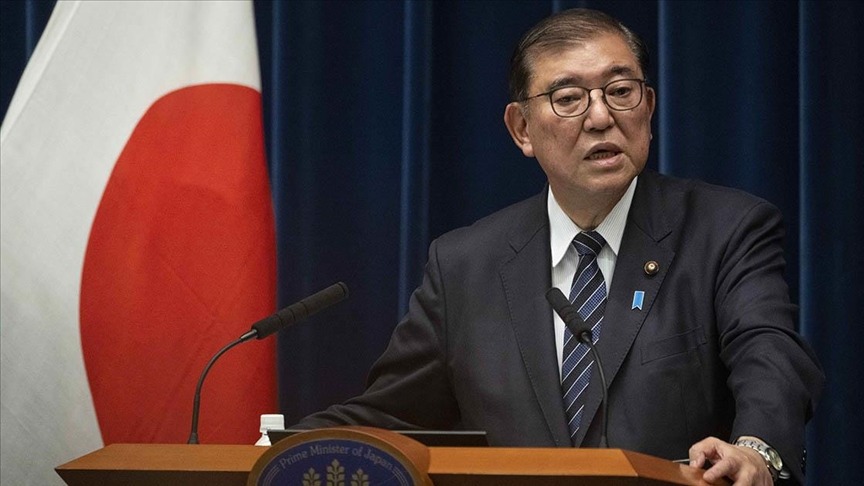
In the fifth month of Donald Trump’s second administration, the United States and its most crucial ally in the West Pacific, Japan, appear to be out of sync.
On Monday, Japanese Prime Minister Shigeru Ishiba announced he would not attend this week’s NATO summit in the Netherlands. Additionally, he neither supported nor condemned Trump’s decision over the weekend to attack Iran’s nuclear facilities.
These are just the latest signs of discord that have emerged in recent weeks. Japanese Foreign Minister Takeshi Iwaya is set to visit Washington for a QUAD foreign ministers’ meeting with his counterparts from India and Australia later this month, but the expected two-plus-two meeting of US and Japanese foreign and defense ministers will not take place.
A US official told Nikkei Asia in late May that an inter-agency agreement had been reached on the US side to demand that Japan increase its defense spending to 3% of its gross domestic product (GDP) as part of ongoing trade negotiations aimed at reducing tariffs.
However, a new figure of “3.5%” began circulating in Washington after US Defense Secretary Pete Hegseth met with his Australian counterpart, Richard Marles, during the Shangri-La Dialogue in Singapore on May 30.
A Pentagon statement released two days after the meeting said, “Secretary Hegseth conveyed that Australia needs to increase its defense spending to 3.5% of its GDP as soon as possible.”
US officials, led by Under Secretary of Defense for Policy Elbridge Colby, began stating that the new “fixed demand” for Asian allies was 3.5%.
Last week, Pentagon spokesman Sean Parnell formalized this by issuing a statement indicating that European allies had set a new “global standard” for US alliances at 5% of GDP. This statement was related to NATO Secretary General Mark Rutte’s recently announced spending targets of 3.5% for military procurements and 1.5% for related infrastructure.
A Japanese official told Nikkei that Tokyo was open to discussions on increasing defense spending, but the process appeared disorderly. Officials noted that Washington had not officially communicated any figures to Japan. It was also reported that Japanese officials had difficulty communicating directly with Colby.
Another Japanese official stated that if Japan were to increase its defense spending (currently 1.8% of GDP, with plans to reach 2% by fiscal year 2027), it would be a sovereign decision by Tokyo and would need to be explained with justifications that could be presented to the Japanese public.
Zack Cooper, a senior fellow at the American Enterprise Institute think tank, said the Trump administration had been “pretty inconsistent” in its approach to Japan, and this uncertainty would create a challenge for the alliance.
“Ishiba’s cancellation of the NATO meeting and the two-plus-two meeting, when put together, certainly form a concerning set of signals,” he said.
Cooper assessed, “To me, this suggests that Tokyo wants to wait for the upper house elections [on July 20] rather than engage directly with the Trump administration.”
Asia
US cries to China as Washington begins airstrikes in Iran
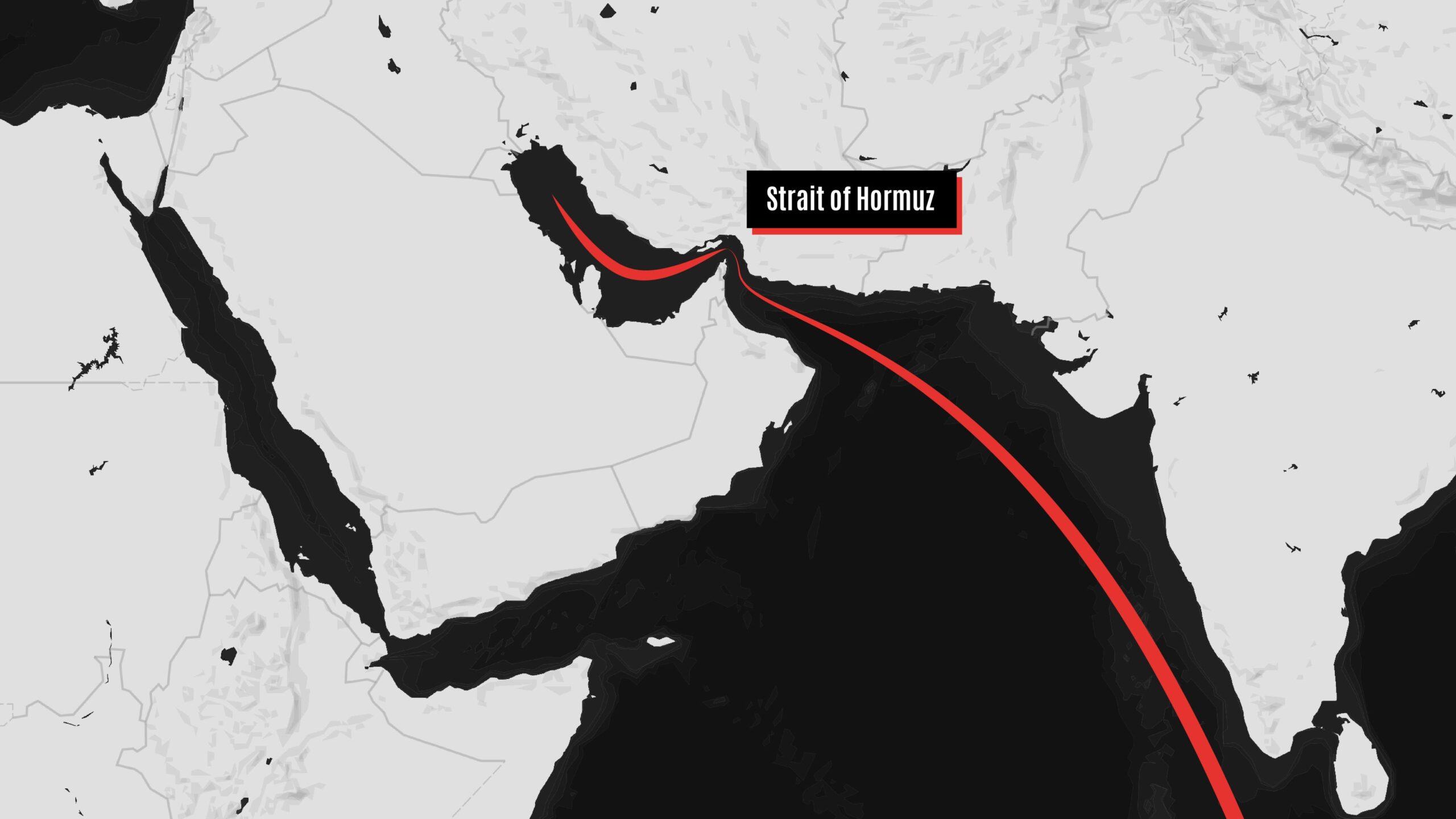
While the Middle East is going through one of its most tense periods, the world has been shocked by the news of a direct attack by the United States on Iran’s nuclear facilities. Washington has announced that Iran’s nuclear facilities no longer exist. At the same time, Tehran has warned in a strong tone that it will respond to this aggression.
This action was immediately met with widespread regional and international reactions. The United Nations, the European Union, global powers such as Russia and China, and America’s traditional allies in the West each took their own stance.
At an emergency meeting of the United Nations, Secretary-General Antonio Guterres described the move as a dangerous turn in an already crisis-ridden region. A wave of criticism has also emerged within the United States, with some describing the attack as successful.
At the same time, a number of lawmakers from both the Republican and Democratic parties consider Trump’s action to be without congressional authorization and unconstitutional.
Some reactions:
Russian envoy: US attack carried out without any provocation from Iran.
US Representative: The Iranian regime should not have nuclear weapons.
Iran’s ambassador to the Security Council: America once again sacrificed its security for Benjamin Netanyahu.
Israeli Ambassador to the Security Council: America changed the course of history by attacking Iran.
Rafael Grossi, the head of the International Atomic Energy Agency: Military attacks should not be carried out on nuclear facilities, saying he is ready to immediately travel to all countries regarding this case.
UK UN envoy: Military action alone cannot address concerns about Iran’s nuclear program, saying his country was not involved in Iran attack, referred to concerns about Iran’s nuclear program and said that military action alone cannot permanently address concerns about Iran’s nuclear program. He called on Iran to exercise restraint and urged the parties involved to return to the negotiating table.
France: Now is the time to end the attacks and return to negotiations.
But now why US cries to China for help to reopen Strait of Hormuz
Soon after a US airstrike in three locations, Iran closes the Strait of Hormuz, one of the world’s most important shipping routes. Now this move puts the US in trouble and US Secretary of State Marco Rubio has called on China to prevent Iran from closing the Strait of Hormuz.
However, it seems that the US is too late and according to Iran’s state-run Press TV, the decision was made by Iran’s Supreme National Security Council.
The US understands that any disruption on the supply of oil would have profound consequences for the economy and wants to play an emotional card with China to convince Iran to reopen the route as Beijing is also one of the largest buyers of Iranian oil.
It is reported that 20 percent of the world’s oil passes through the Strait of Hormuz, and major oil and gas producing countries in the Middle East use this route to export energy.
Meanwhile, US President Donald Trump has said that regime change is inevitable if the Islamic Republic cannot “make Iran great again.” His statement came following US military strikes on Iranian military facilities.
Iran: Game is not over even assuming the complete destruction of the nuclear sites
Ali Shamkhani, advisor to Ayatollah Ali Khamenei, the religious leader of Iran, has said in response to the US attacks that even assuming the complete destruction of the nuclear sites, the “game is not over”.
“Even assuming the complete destruction of the sites, the game is not over; because the enriched materials, indigenous knowledge, and political will remain intact,” he said.
He noted that “now the political and operational initiative with the right to self-defense is in the hands of the side that knows how to play smart and avoids blind shooting.”
-

 Middle East6 days ago
Middle East6 days agoUS to launch major bombing campaign against Iran this weekend, Hersh reports
-

 Diplomacy2 weeks ago
Diplomacy2 weeks agoFormer diplomat warns forcing Iran out of the NPT is the greatest danger
-

 Middle East1 week ago
Middle East1 week agoIran targets Mossad and Unit 8200 in missile attack on Tel Aviv
-

 Diplomacy2 weeks ago
Diplomacy2 weeks agoFormer CIA analyst says Israel used ceasefire talks as a trap
-

 Middle East2 weeks ago
Middle East2 weeks agoNetanyahu’s government survives no-confidence vote as Haredi crisis is delayed
-

 Middle East1 week ago
Middle East1 week agoIranian missile attack causes heavy damage across Israel
-

 Middle East1 week ago
Middle East1 week agoIran signals NPT withdrawal amid rising tensions with Israel
-

 Middle East2 weeks ago
Middle East2 weeks agoIsrael strikes Iran’s nuclear program, killing high-level commanders






